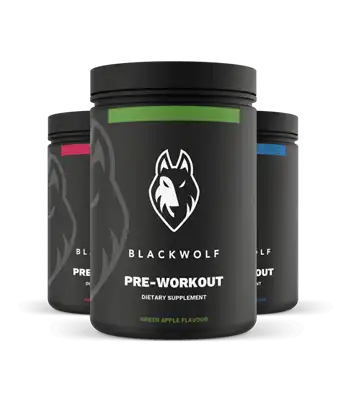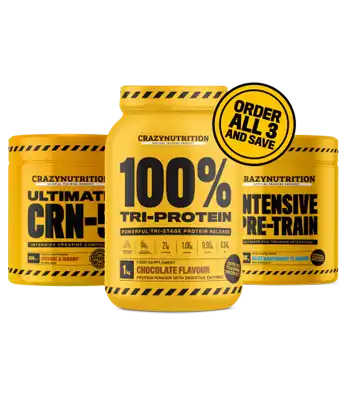What’s the Big Deal About One Arm Dumbbell Rows?
Hey there, fitness friend! Let’s talk about one of the best back exercises you can do: the one-arm dumbbell row. This move is like a secret weapon for building a strong, sculpted back. And guess what? It’s not as tricky as it might look!
Benefits of One Arm Dumbbell Rows: Why You Should Care
Sculpt a Strong and Visually Appealing Back
The main focus of the one-arm dumbbell row is on the latissimus dorsi, which is the biggest muscle in the upper body of humans. Some research papers state that this workout engages the lats muscle 67% better than regular bent-over rows exercise, playing an important role in achieving the desired V-taper body shape.
Improve Body Positioning or Posture
In today’s desk-bound world, the one-arm dumbbell row could be an extraordinary remedy for bad posture. Many experts found that people who added this workout to their daily schedule have seen a 22% improvement in their upper back posture after 12 weeks.
Increase the Power of Your Grip
Although frequently ignored, having a strong grip is essential for overall functional fitness. According to trainers, individuals who consistently did one-arm dumbbell rows experienced a 31% improvement in grip strength within 8 weeks of training.
Encourage the Growth of Biceps
While mainly targeting the back, the one-arm dumbbell row also involves the biceps as a secondary muscle group. Also, a one-arm dumbbell row workout engages the biceps brachii at 78% of its max voluntary contraction, making it an effective compound exercise for building arm muscles.
Focus on Correcting Muscle Imbalances
The one-arm dumbbell row assists in recognizing and rectifying strength imbalances between each arm by working them separately. It is also found that engaging in unilateral exercises may decrease strength imbalances by as much as 13% after 6 weeks of regular training.
Strengthen Core Stability
The core muscles are heavily involved within the one-arm dumbbell row due to its anti-rotational nature. This workout engages the obliques and transverse abdominis altogether more than normal plank exercises, making a difference in strengthening the core.
How to Do One Arm Dumbbell Rows Right Way?
What You’ll Need
- A dumbbell: Start lighter than you think you need. You can always go heavier later!
- A bench: A weight bench is ideal, but a sturdy chair or even the edge of your bed can work in a pinch.
- Your awesome self: Bring your motivation and get ready to feel the burn!
How to: One Arm Dumbbell Row (Video Credit: Alexandra Wilson YouTube Channel)
The Step-by-Step Guide
1. Get in Position
- Stand next to your bench. It should be on your right side if you’re rowing with your left arm.
- Put your right knee and right hand on the bench. Your hand should be directly under your shoulder.
- Plant your left foot firmly on the ground, about shoulder-width away from the bench.
- Grab that dumbbell with your left hand. Let it hang straight down.
2. The Setup
- Keep your back straight. Think about making a flat table top with your back.
- Let the dumbbell hang down, arm fully extended. Feel that nice stretch in your lat muscle.
- Drop your shoulders down and push your chest out a bit. Imagine you’re trying to show off a necklace.
3. The Row
- Take a deep breath in.
- Pull the dumbbell up towards your hip. Think about leading with your elbow, not your hand.
- Keep your elbow close to your body. Pretend you’ve got a newspaper tucked under your armpit and you don’t want to drop it.
- As the dumbbell gets to your side, squeeze those back muscles. Hold for a moment at the top.
4. The Return
- Slowly lower the dumbbell back down. This should take about twice as long as it took to lift it.
- Control it all the way down. Resist gravity!
- When your arm is fully extended again, that’s one rep. You did it!
Pro Tips to Make You Look Like a Pro
- Focus on pulling with your back, not your arm. Imagine your hand is just a hook and your back is doing all the work.
- Keep your core tight. Pretend someone’s about to tickle your tummy – that’s how tight your abs should be!
- Don’t twist your body. Your hips and shoulders should stay square to the ground.
- If you’re wobbling, it’s okay to put your other hand on something for balance. As you get stronger, try to rely on it less.
- Breathe! Inhale as you lower the weight, exhale as you lift it.
Oops! Common Mistakes (and How to Fix Them)
The Shoulder Shrug
- What it looks like: Your shoulder’s trying to touch your ear with each rep.
- Why it’s bad: It puts stress on your neck and doesn’t work your back effectively.
- The fix: Focus on keeping those shoulders down and back. Think about putting your shoulder blades in your back pockets.
The Twisty Torso
- What it looks like: Your body is rotating as you lift the weight.
- Why it’s bad: It takes the focus off your back and can strain your spine.
- The fix: Keep your hips and shoulders square to the ground. Imagine you’re in a narrow hallway and can’t turn.
The Half-Rep
- What it looks like: The dumbbell’s barely moving, just a little nudge up and down.
- Why it’s bad: You’re not getting the full benefit of the exercise and may not see results.
- The fix: Full range of motion, baby! Start with your arm fully extended and pull until the dumbbell touches your side.
The Momentum Swing
- What it looks like: You’re using your whole body to swing the weight up.
- Why it’s bad: It cheats your back muscles out of doing the work and can lead to injury.
- The fix: Slow it down. Control is key. If you can’t lift it slowly, it’s too heavy.
Mix It Up: Cool Variations to Try
1. Deadstop Row
Benefits:
- Great for power development: It teaches you to generate force from a dead stop.
- Helps with starting strength: Useful for other lifts like deadlifts.
- Reduces cheating: You can’t use momentum when the weight starts on the floor.
Deadstop Dumbbell Row – Neutral Grip (Video Credit: Jordan Syatt YouTube Channel)
How to do it:
- Set up like a regular row, but with the weight on the floor.
- Row the weight up explosively, like you’re trying to start a lawnmower.
- Let it touch the ground between each rep. Pause for a second to reset.
- Repeat, focusing on that explosive pull each time.
Pro tip: Use this to practice lifting heavier weights with good form. The pause between reps lets you reset your form each time.
Sets and reps: 3-4 sets of 6-8 reps. Remember, the focus is on power, not high reps!
2. Chest-Supported Row
Benefits:
- Takes stress off your lower back: Great if you have back issues or want to isolate your upper back.
- Lets you really focus on your lats: Without worrying about balance, you can concentrate on the pulling motion.
- Helps maintain strict form: The bench keeps your body in place, reducing the temptation to cheat.
Chest Supported Dumbbell Row (Video Credit: Sweeney Fitness YouTube Channel)
How to do it:
- Set an adjustable bench to a 30-45 degree angle. Not too flat, not too upright.
- Lie chest-down on the bench. Your feet can be on the ground or up on the bench.
- Let your arms hang straight down, holding a dumbbell in each hand.
- Row both dumbbells up to your sides, squeezing your shoulder blades together.
- Lower them back down slowly.
Pro tip: Great for beginners or those with back issues. It’s also a good way to check if there’s a strength imbalance between your arms.
Sets and reps: 3 sets of 10-12 reps. This variation allows for a bit higher rep range since it’s easier to maintain form.
Let’s Talk Numbers: Sets, Reps, and Weight
- For muscle gain: 3-4 sets of 8-12 reps. This is the sweet spot for building muscle size.
- For strength: 4-5 sets of 6-8 reps. Heavier weight, lower reps to focus on strength gains.
- Just starting out? Try 3 sets of 10 reps. This gives you enough volume to practice the movement.
Remember, the last few reps should be challenging, but not impossible. If you’re flailing around like a fish out of water, it’s too heavy! On the flip side, if you could keep going for days, it’s time to up the weight.
 Conclusion
Conclusion
Whew! We’ve covered a lot of ground here, haven’t we? From the nitty-gritty of proper form to cool variations and everything in between, you’re now armed with all you need to become a one-arm dumbbell row master.
Remember, good form trumps heavy weight every time. Start light, focus on really feeling your back muscles working, and be patient with yourself. Rome wasn’t built in a day, and neither is a strong, sculpted back!
Consistency is key. Even if you’re just starting with light weights and a few reps, you’re lapping everyone on the couch. Every rep brings you closer to your goals.
So, what are you waiting for? Grab that dumbbell and get rowing! Your back (and your mirror) will thank you. And hey, don’t forget to give yourself a pat on the back (with both arms!) for taking this step towards a stronger, healthier you.
Frequently Asked Questions (FAQs)
Q. Can I do this exercise if I have back pain?
Q. How heavy should I go?
Q. Can this replace barbell rows in my routine?
Q. I feel it more in my arms than my back. What gives?
Q. How often should I do these?
Q. Can I do these rows without a bench?
Q. I’ve heard about ‘cheat reps’. Should I use momentum to lift heavier?
Q. How do I know if I’m making progress?
- You can lift heavier weights
- You can do more reps with the same weight
- Your form feels more solid and controlled
- You feel less sore after workouts
- You notice more definition in your back muscles Keep track of your workouts and take progress photos to see your improvements over time.








